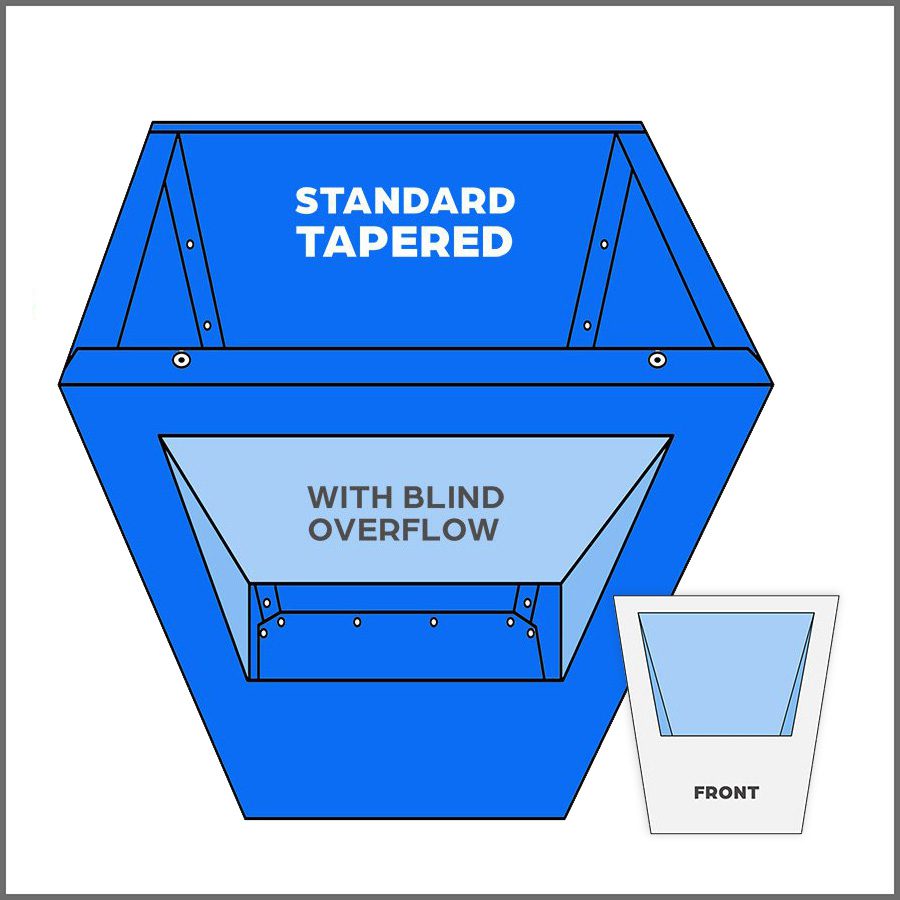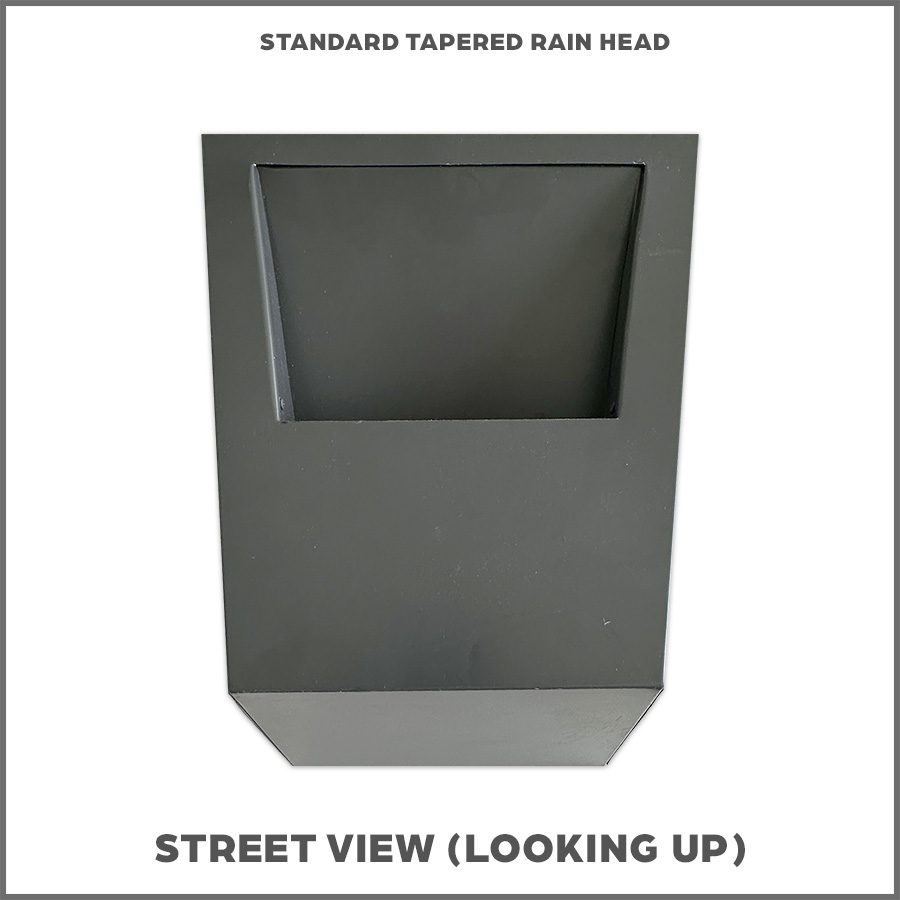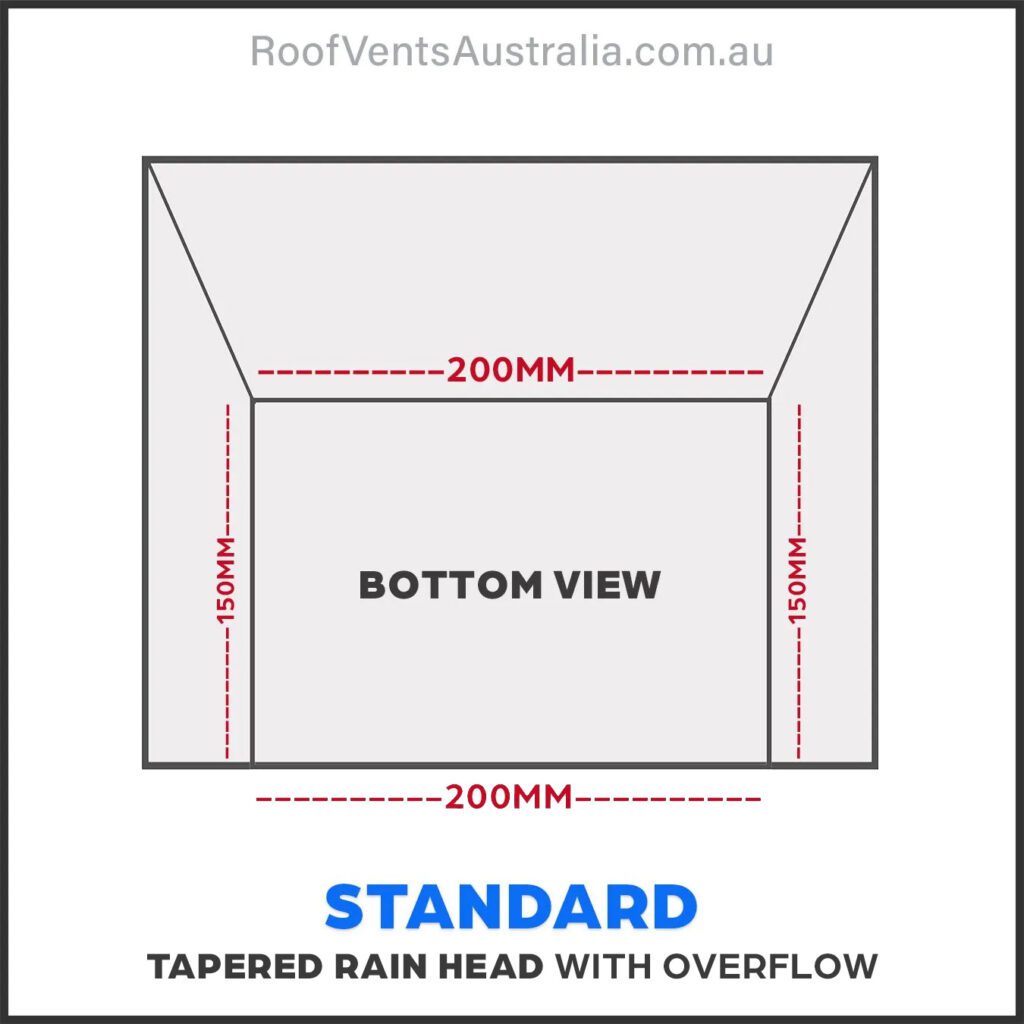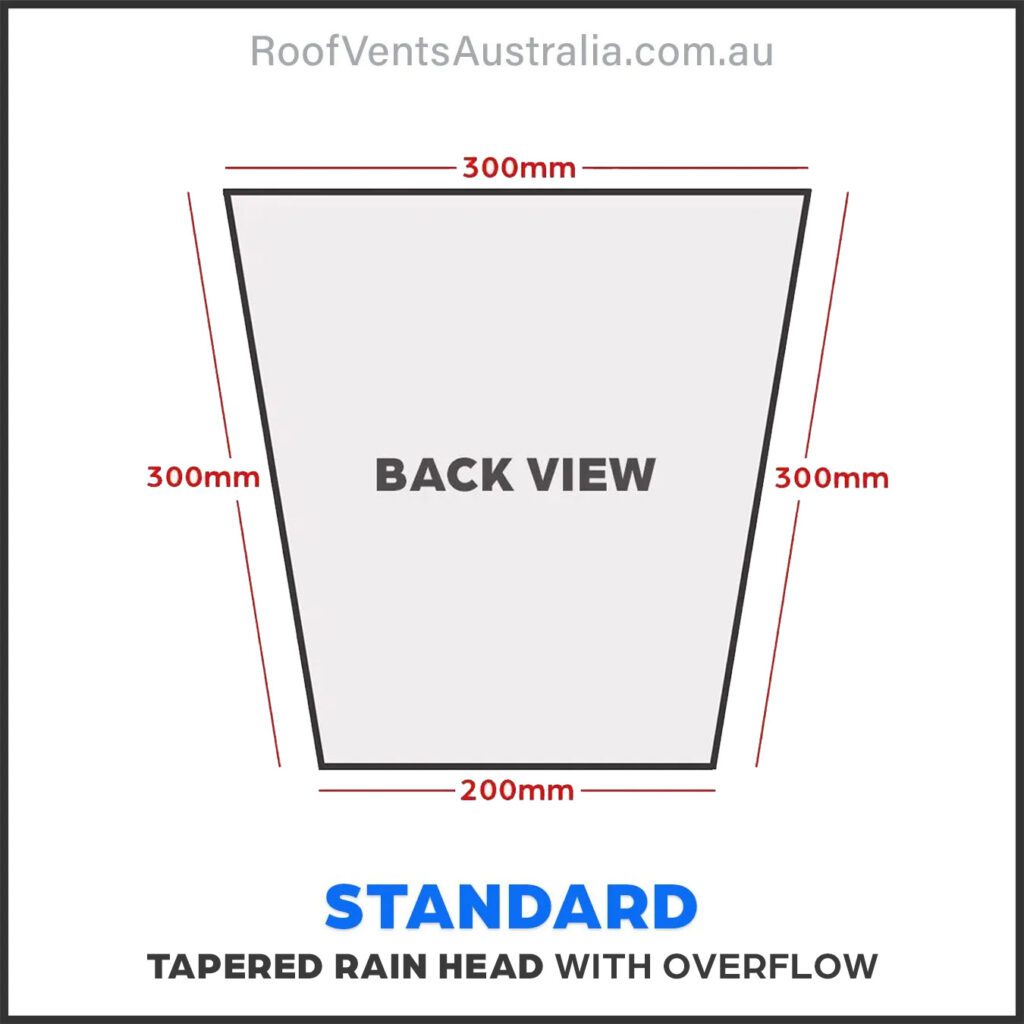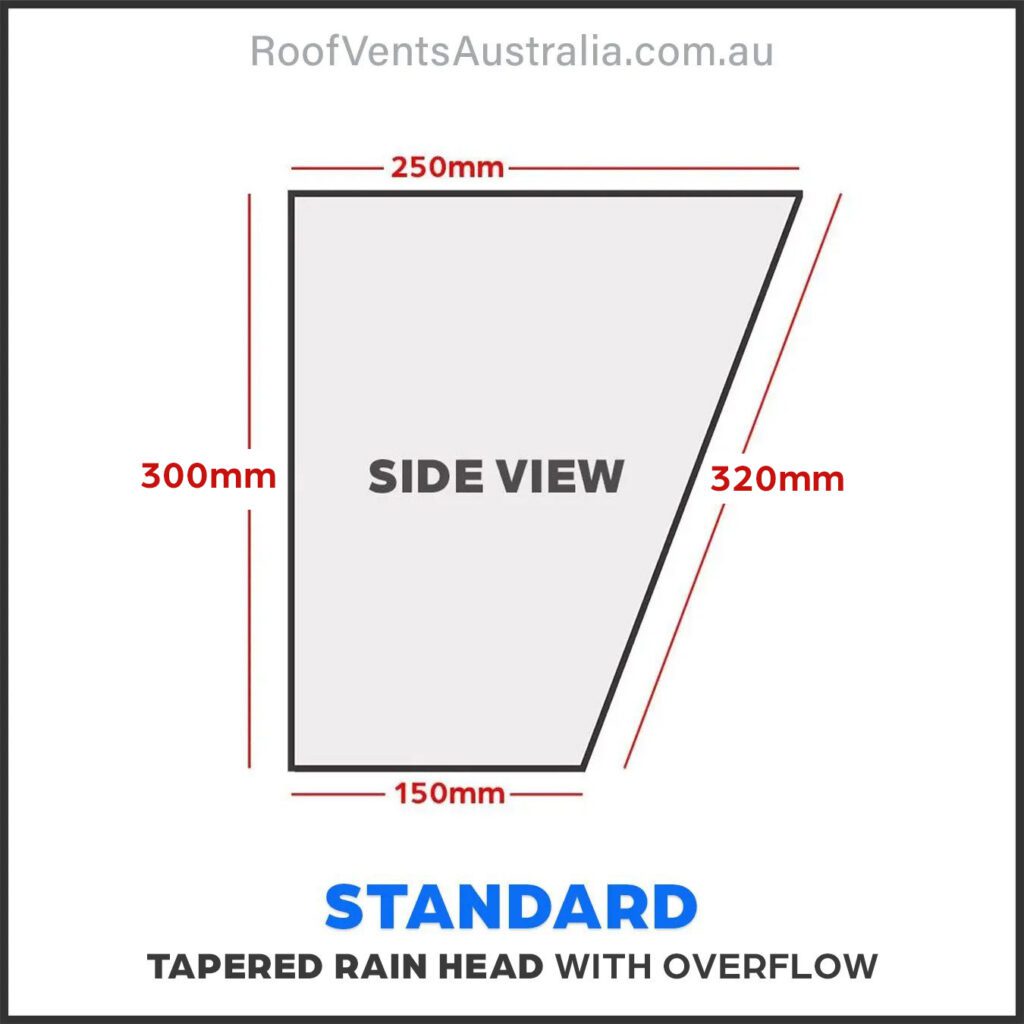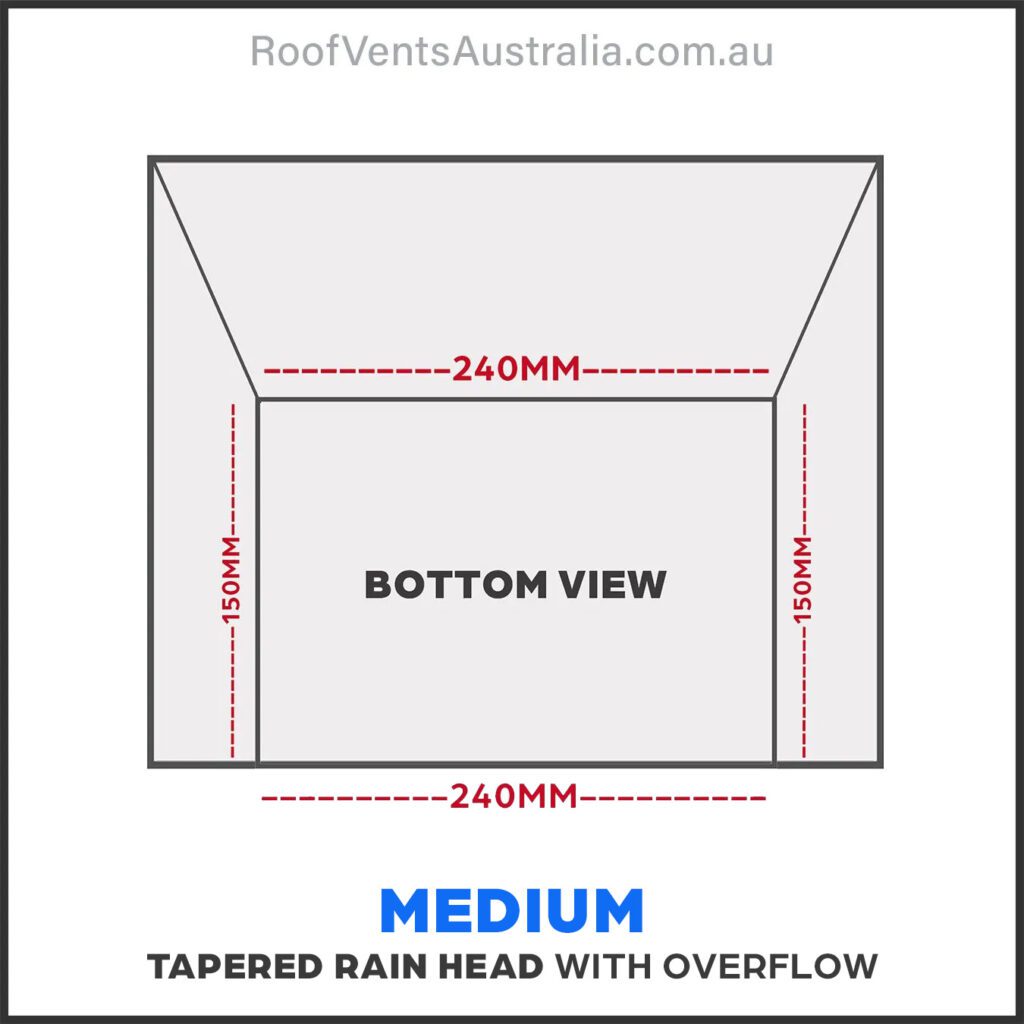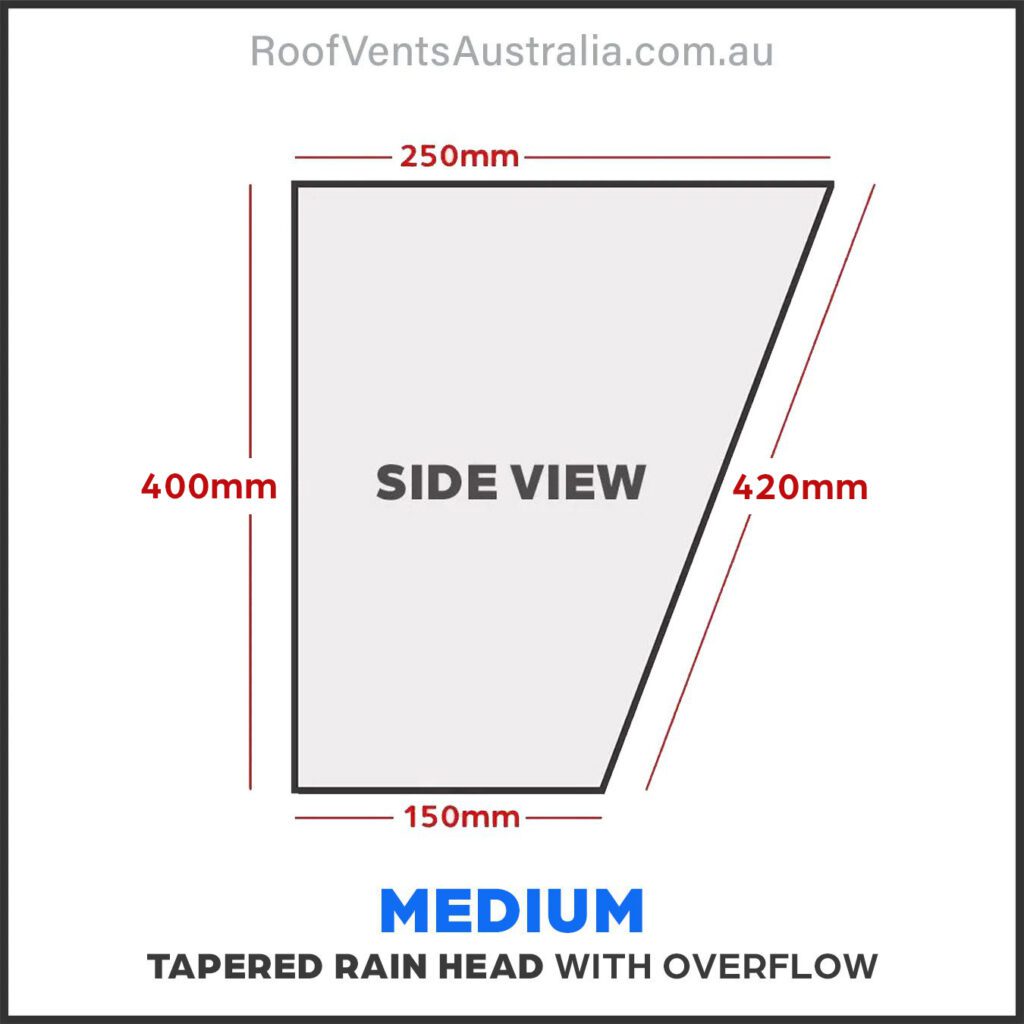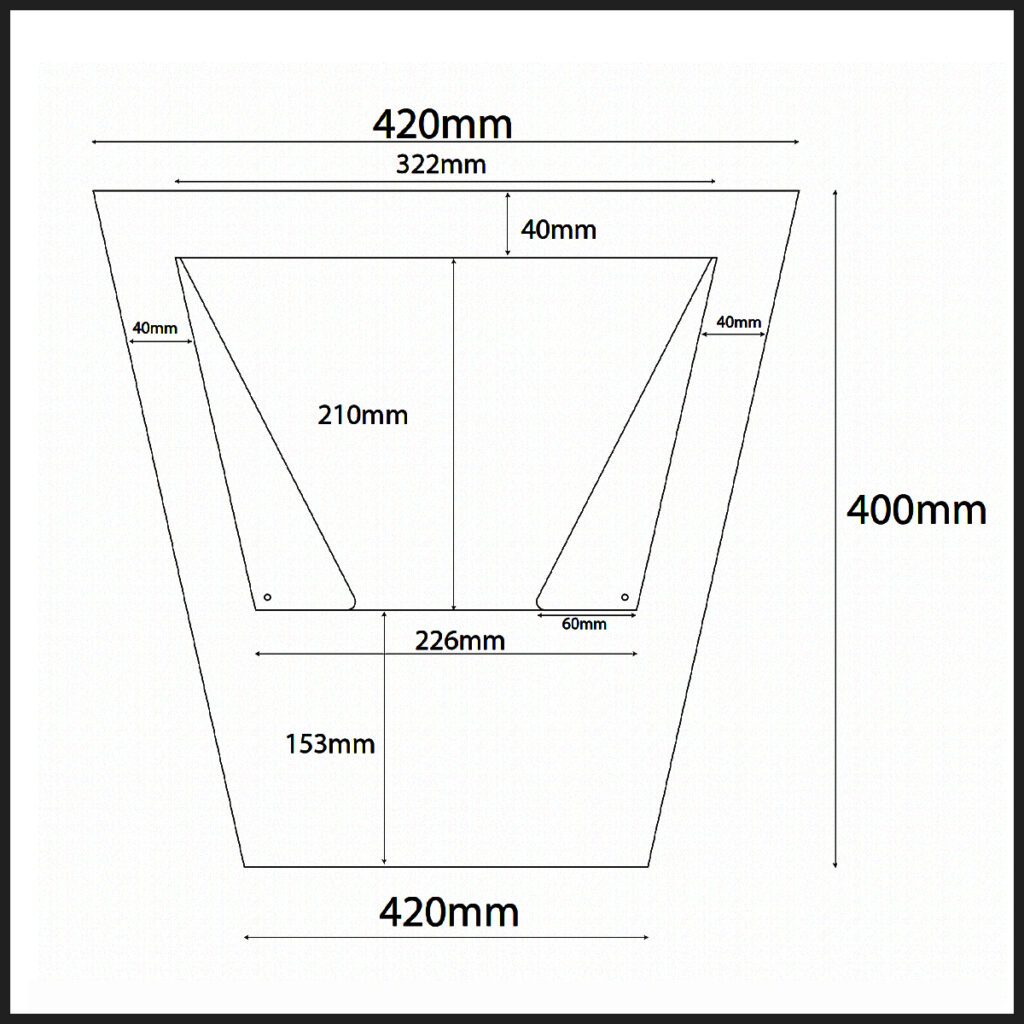Rain Heads With Overflow
Rainwater heads made In-House
ALL PRICES INCLUDE TAX AND FREE SHIPPING AUSTRALIA WIDE (Excluding NT)
Order in Zincalume or Colorbond™
STANDARD SIZE – RAIN HEAD WITH OVERFLOW
MEDIUM SIZE – RAIN HEAD WITH OVERFLOW
[gravityform id=”20″ title=”true”]
Rainwater Heads: Enhancing Performance in Australia’s Tropical Monsoon Regions
In the tropical monsoon regions of Australia, where the climate oscillates between dry spells and intense, torrential downpours, effective rainwater management systems are not just beneficial—they are essential. Among the myriad components that contribute to the efficiency of these systems, rainwater heads, particularly when used in conjunction with box gutters and gutter sumps, play a pivotal role. As an expert in the field of roof plumbing, I can attest to the value that well-designed rainwater management components bring to buildings in these climatically challenging areas.
The Critical Role of Rainwater Heads
Rainwater heads, also known as collector boxes, are key elements in a building’s rainwater disposal system. Positioned just below the gutter and above the downpipe, they serve multiple functions. Primarily, they act as a transition point where water is collected before being directed down the pipes. In high rainfall zones like Australia’s tropical north, their role is amplified due to the sheer volume of water they need to handle.
One of the primary benefits of rainwater heads is their ability to enhance the capacity of the downpipe system. By temporarily holding rainwater and feeding it gradually into the downpipes, they prevent system overflow, which is a common problem during heavy rainfall. This buffering capacity is crucial in monsoon regions, where the intensity of rain can quickly overwhelm standard guttering systems.
Moreover, rainwater heads are designed to facilitate easier cleaning and maintenance. Debris such as leaves and twigs, which are frequently washed into the system during storms, can accumulate and cause blockages. The accessibility of rainwater heads allows for regular cleaning, ensuring the system remains unobstructed and functional, especially when it’s needed the most.
Synergy with Box Gutters and Gutter Sumps
The integration of rainwater heads with box gutters and gutter sumps creates a harmonious system that maximizes rainwater management efficiency. Box gutters, with their enclosed design, are particularly suited to areas prone to heavy rainfall. Their larger capacity compared to traditional gutters allows for the accommodation of higher volumes of water, reducing the risk of overflow.
However, the effectiveness of box gutters is significantly enhanced with the inclusion of rainwater heads. The rainwater head acts as a critical overflow point, preventing water from backing up into the roof space—a scenario that can lead to significant water damage.
Gutter sumps, often installed at the base of rainwater heads, add an additional layer of protection. They serve as a catchment area for debris, preventing it from entering the downpipes. This is particularly important in tropical monsoon areas, where storms can bring not only high volumes of water but also significant amounts of foliage and other debris.
Design Considerations for Tropical Monsoon Areas
In designing rainwater management systems for tropical monsoon regions, several key factors need to be taken into account. The size and capacity of rainwater heads, box gutters, and gutter sumps must be calculated based on the maximum expected rainfall intensity. This involves a thorough analysis of historical weather data and an understanding of the unique climatic patterns of the area.
Material selection is another critical consideration. The corrosive nature of rainwater, compounded by the high humidity and salinity in coastal areas, demands the use of durable, corrosion-resistant materials. Aluminium, stainless steel, and UV-stabilized PVC are popular choices for their longevity and minimal maintenance requirements.
Furthermore, the design should prioritize ease of access for maintenance. Rainwater heads should be positioned in a manner that allows for easy removal of debris, and gutter sumps should be designed with detachable grates.
Conclusion
In the unique climatic conditions of Australia’s tropical monsoon regions, efficient rainwater management systems are indispensable. Rainwater heads, in synergy with box gutters and gutter sumps, form a comprehensive solution that addresses the challenges posed by heavy rainfall. Their role in enhancing the capacity of downpipes, preventing water damage, and facilitating maintenance makes them invaluable components of any building’s rainwater disposal system.
For building owners and architects in these areas, investing in well-designed rainwater management components is not just a matter of convenience—it’s a crucial aspect of building resilience. By acknowledging the pivotal role of rainwater heads and their complementary components, we can ensure our structures are better equipped to withstand the rigors of tropical monsoon climates, safeguarding our buildings and their occupants against the elements.

